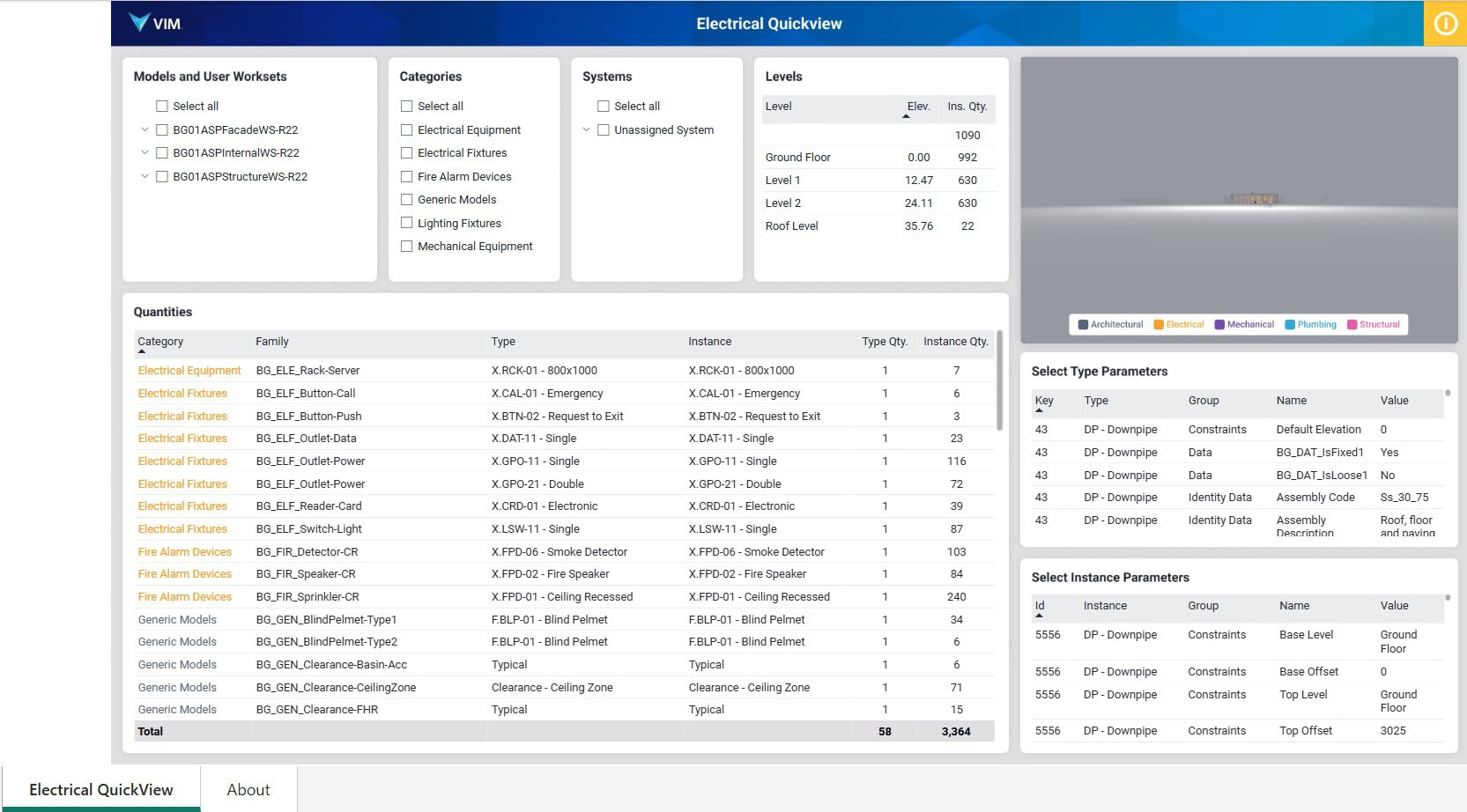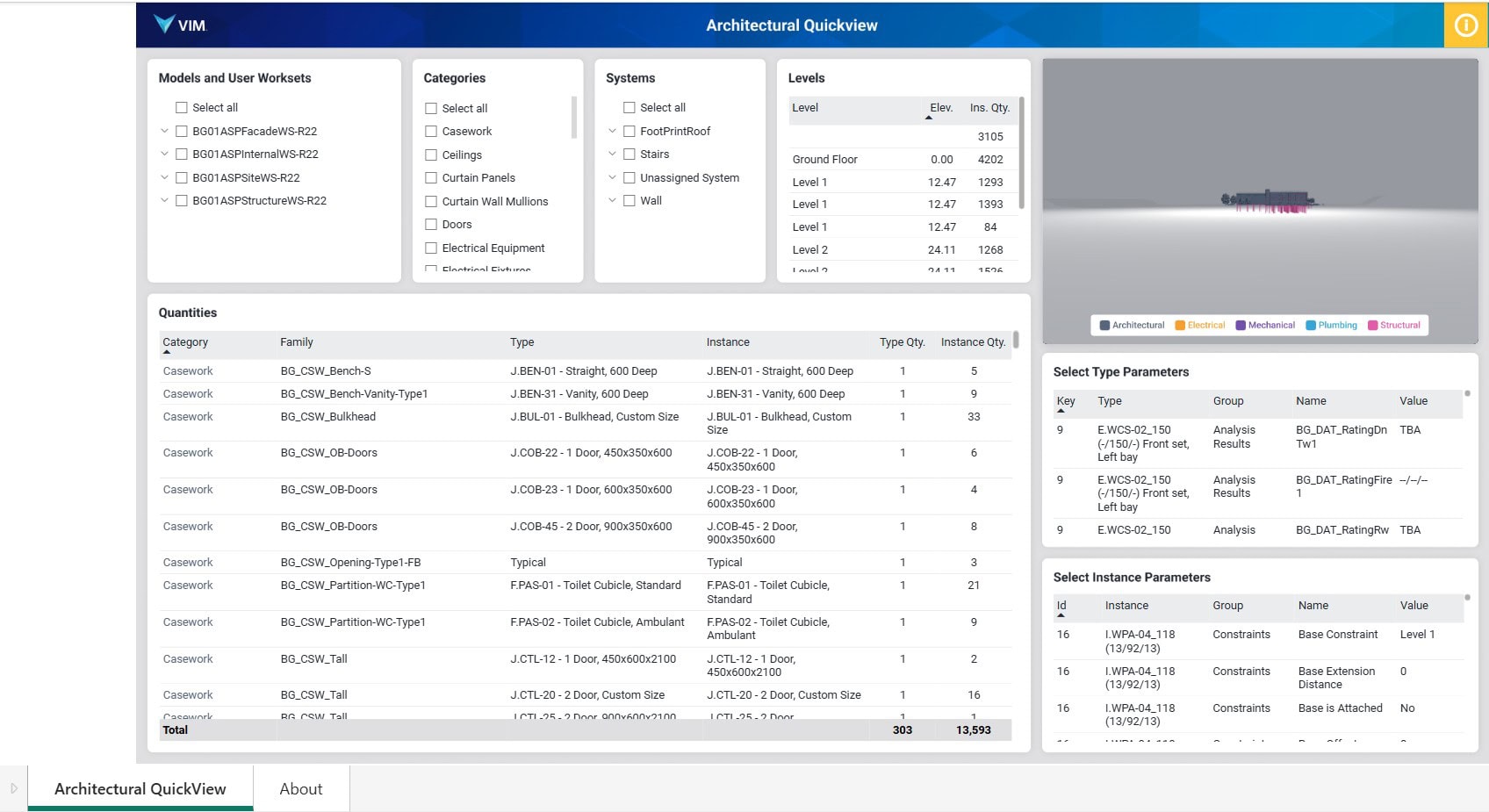Background
VIM AEC (www.vimaec.com) is an engineering technology firm that has developed a novel method for producing powerful analytics from Revit BIM documents using its proprietary SaaS solution.
Their SaaS platform enables users to export BIM data from Revit and transform it into comprehensive Power BI reports for developers, architects, and engineers. This goes beyond reporting, as users can also ask complex questions of their models, identify issues and anomalies, and conduct LEED (Leadership in Energy and Environmental Design) analysis.
Challenge
The task of interpreting data from Revit Building Information Modeling (BIM) is a challenging one. It’s further complicated by the need to create a universal model that can adapt to projects of all sizes, from small-scale construction to massive government initiatives with millions of parameters and elements. Moreover, this data is often unstructured and hard to make sense of. To conquer these hurdles, VIM AEC partnered with Alphabyte, to develop a state-of-the-art data model.

Sample Relationship between BIM entities
An Engineering Problem
Engineers face several challenges when working with their BIM data, including the following questions:
Parameter Analysis: How can elements and parameters be analyzed across multiple interconnected hierarchy levels, including Instances, Family Types, and Families?
Data Modeling: How can data be effectively modeled for projects with millions of parameters and elements?
Technical Analysis: How can data be modelled in a way that can answer technical scenarios such as the following:
-
-
- Identifying steel beams with a yield strength over 50 KSI in the basement.
- Identifying concrete slabs less than 6 inches thick.
- Finding rooms on the third floor with an area less than 100 square feet.
- Identifying windows larger than 20 square feet facing south.
- Determining electrical panels on the second floor serving loads over 200 amps.
- Finding circuits with a voltage drop greater than 5%.
-
These complex challenges required a sophisticated data model capable of navigating interrelated data hierarchies and relationships.
Enterprise Solution
To take on the challenge, we partnered with VIM’s engineers to develop an enterprise-grade Data Model using Azure SQL Server and Power BI.

A segment of the Data Model we built.
Our Data Model consolidated data across numerous BIM entities from the Revit API, including the following:
-
-
- Parameter
- Family
- Family Type
- Element
- Compound Structure
- System
- View
- Geometry
- Host
- Level
- Phase
- Room
- Work Plane
- Work set
- Material
-
Data Model Features
The data model we built included several key features:
-
-
- Data Analysis: Capable of answering complex technical questions about how various instances and parameters relate to each other.
- Scalability: Structured to handle extremely large projects with millions of parameters.
- Data Integration: Seamlessly integrates diverse data types from Revit, consolidating them into a unified model for easier analysis
-
The data model supported the development of multiple reports, including:
Electrical QuickView: Analyzes the electrical components of Revit models. (Report)

Structural QuickView: Explores the structural elements of Revit models. (Report)

Architectural QuickView: Provides a thorough summary of the architectural content of Revit models. (Report)

A Success Story
The implementation of the data model has been a game-changer for hundreds of VIM AEC end-users. It unlocked new analytical capabilities which have provided the AEC end-users with valuable insights that were previously unattainable.
This case study exemplifies how Alphabyte’s expertise in data modeling and analytics can drive significant advancements in the AEC sector, ensuring that software companies and Engineering Firms alike can utilize the Microsoft Stack to its fullest capabilities.